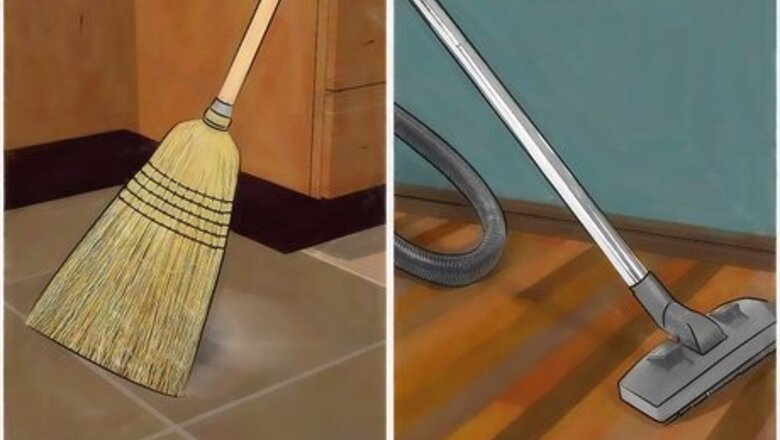
views
- Soak a cotton ball with peppermint oil, then leave the cotton ball around areas of mice activity. Alternatively, use dried snake feces the same way.[1]
- Plug in an ultrasonic repelling device, or spray areas of mice activity with a store-bought, organic deterrent.
- Plug any holes in interior and exterior walls with spackle, caulk, or steel wool. In addition, use peanut butter to prime a live-catch trap.
Discouraging Mice Naturally
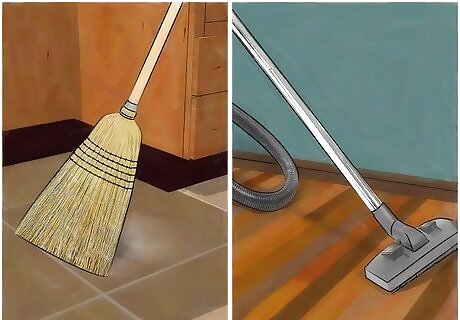
Keep your home clean. Many times, mice are drawn into homes on the search for food. If there is nothing to eat, mice will be less likely to stay. Keep all food stored properly in airtight containers or in places that are safe from mouse attack.
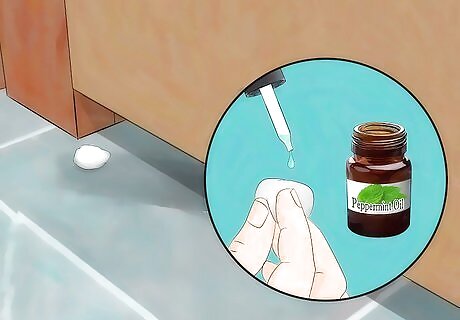
Apply peppermint oil. Peppermint oil is a natural deterrent. The smell is simply too intense for rodents and they will not try to go near it. It also helps to mask the scent of any tasty morsels that have been missed when cleaning. It also gives the house a lovely smell, and is not toxic, unlike many synthetic chemical treatments. You can get peppermint oil in most health food stores and even some major grocery stores. Place a drop or two on a cotton ball. Place a cotton ball under or near your garbage can to deter mice from getting into it. Place the cotton balls in areas where mice are likely to enter your house, by doorways, or heat vents, etc. Peppermint oil cotton balls need to be replaced after 5-7 days, depending upon the quantity of oil you put on it. Try growing peppermint plants near the entryways. You can use the mint in cooking, as well as it serving a deterrent purpose.
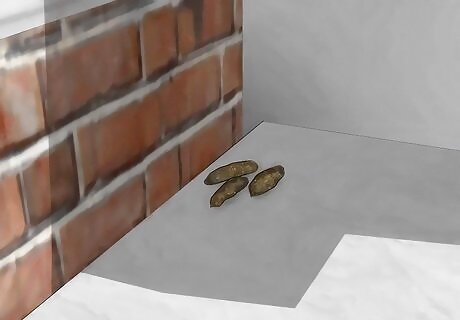
Use dried snake feces. Visit a local reptile center, zoo, or pet store and ask for some dried snake poo. You can also sometimes find someone who owns a pet snake. Place near entrances and in places where mice seem to go. This will keep mice away. Be sure to keep the feces out of the reach of children and pets.
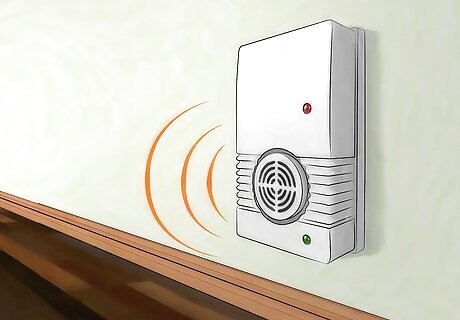
Zap mice with ultrasonic sounds. There are electronic units sold that emit an ultrasonic beeping sound that rodents hate. They should be available at your local home improvement store or online. These work only on a single line of sight, so you need to know the exact path the mice are taking. The units may only work for a short time because mice can become used to them.
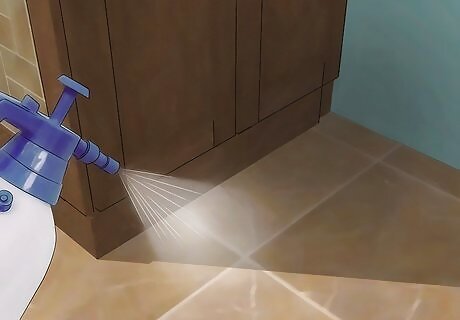
Use a commercial, organic deterrent. Many companies that specialize in organic garden and home products make mice repellents that are better for the environment than traditional poisons. Many of these products use natural ingredients, such as peppermint, that are known to be disagreeable to mice. They will not kill mice but they should keep them out of areas where the product is applied. These products should be available at your local gardening or home improvement center. If you want a specific product, try doing an online search to see where it is available locally.
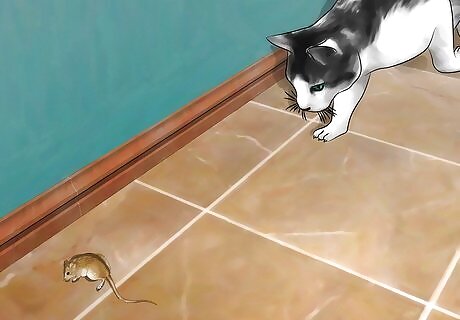
Get a cat. A house cat can take care of the problem. Cats that spend time outdoors are more likely to hunt to find their own food and may track down that mouse. Just be aware, not all cats have enough energy, interest, or training to hunt mice. Kittens typically have to be taught by the mother to easily become a mouser. Well-fed indoor kitties might just see the mouse as a toy, and grow quickly bored of it after scaring it half witless. Shelters and adoption agencies often do not know if a cat is a good mouse hunter, and generally do not test for this. Sometimes this information is available, but usually not. While many mousers are great pets as well, not all are. "Barn cats" may not be socialized well with humans, although used to hunting mice for food. Even if you do not have a cat, you can use used kitty litter to deter mice. Place tubs of used kitty litter around entrances of the house. The mice will sniff the smell of cat urine and clear off in a jiffy. If you have a large infestation, a cat may not be enough to totally get rid of it. However, once you eliminate the infestation, a cat will probably prevent reinfestation.
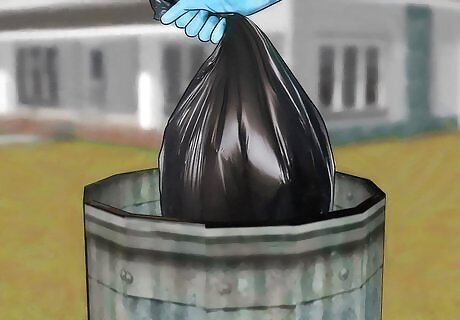
Put your trash cans far from your home. Mice smell garbage and get attracted to your house. If you keep the cans away from the house, they are less likely to take up residence in your home.

Promote the nesting of birds of prey in your yard. Build a shelter box in your garden to attract some onto your property. This may take some time, but it's worth the effort if you can attract a wild mouse eater to your yard. Make sure the shelter box has no nails or safety hazards. A barn owl is the best. A family of barn owls can eat many mice in a night! However, you might attract other types of owls or birds of prey with your nesting box.
Creating Barriers
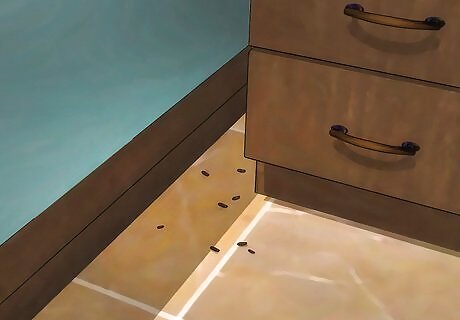
Find the location where the mice are entering. Sometimes there will be greasy stains, and there will almost always be feces near an entry point. There is also a characteristic odor. Mark the spot with caulk if it was hard to find, so that you can find it again easily.
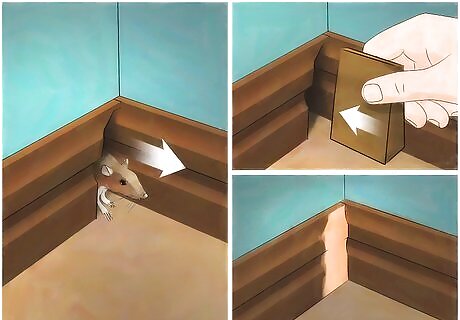
Block up any holes in interior walls. Start with the interior walls, as it's best to leave a way out for the mice. They may leave your home or apartment for easier pickings elsewhere. Use spackle or caulk to seal holes that are relatively small. If you have larger holes that can't be fixed with caulk or spackle, you will need to patch your plaster or drywall. This is a bigger job but important, as a mouse can surely fit through a bigger hole. Make sure baseboards are secured and do not have gaps so that mice can't squeeze out from behind them. If trapped within the walls, mice may chew new holes. This is why it is important to give them a chance to leave before sealing up the exterior entry point. This is one of the most effective ways to get rid of mice, and you won't have to resort to traps or poison.
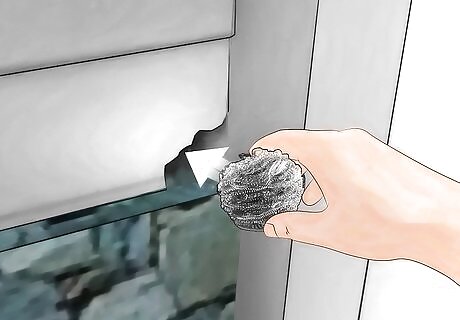
Seal the exterior entry points. The usual recommendation is to fill holes with steel wool. Unfortunately, steel wool rusts and thus is not a permanent solution. Instead, use green kitchen pads, cut to the right size, or copper scouring pads. The pads must be secured to the sides of the hole or the mice will eventually pull them out. Large holes will need to be repaired. Once you are sure that the interior walls are secure, seal any holes on the exterior of your building. You may use plastic scouring pads, but in some cases, walls may need tuck-pointing or other repairs.
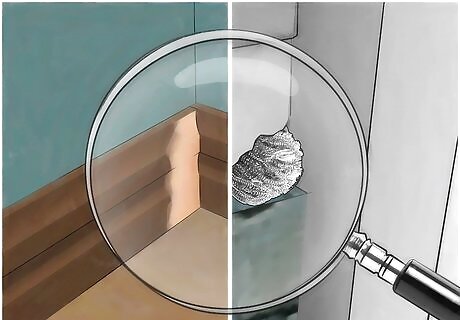
Check entry points again. After a couple of days, look for evidence of any continuing mouse activity. If there is any, check the holes that you sealed, and look for more holes. Seal as needed. Clean up the area around the entrance. Remove feces and disinfect the area to get rid of the smell. Use a solution of one part bleach and ten parts water to accomplish this.
Trapping Mice
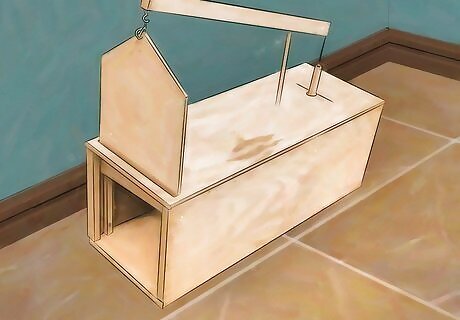
Try a commercial live-catch trap. There are various traps that you might like to try using, all of which allow you to set the mouse free. The most common traps catch the mouse in a box that it can get in but not out of. This is a humane way to catch mice. Once you catch them, you will need to release them at least 1 mile (1.6 km) from your home, perhaps in a heavily wooded area to give them somewhere else to go. Killing or removing rodents alone will not typically solve the problem, nor keep mice gone for long. When animals are killed or removed, more will move in to use available resources. In fact, killing or removing mice can actually result in a temporary spike in the food supply, causing remaining rodents to breed. Still, it is better to reduce the population rather than give up.
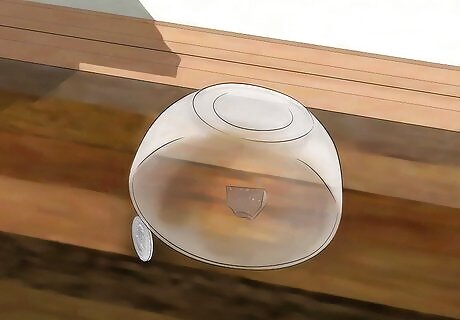
Create a homemade humane trap. Use a glass bowl and a coin. Invert a large glass bowl with some chocolate stuck to the inside of the bowl. Balance the bowl at an angle with the large coin on the edge, edge to edge. Leave it in an area where you know the mouse roams. The mouse will enter under the bowl and reach up for the chocolate, upsetting the balance. The bowl will fall and trap the mouse underneath. Remove the mouse and place it far away from the house.

Lure the mouse into a container it can't get out of. You can set up a 10 gallon (37.9 L) aquarium with food in it. Put the aquarium in a spot that the mouse has been seen in, ideally in a place that blocks the mouse's usual path. Place something next to the aquarium that the mouse can crawl up, like a stack of books. The mouse should try to get the food and jump in to the aquarium. Once inside, the mouse should be trapped by the high walls. Check the trap frequently. Put a top on the aquarium if you find a mouse in there. Release the mouse well away from the house.
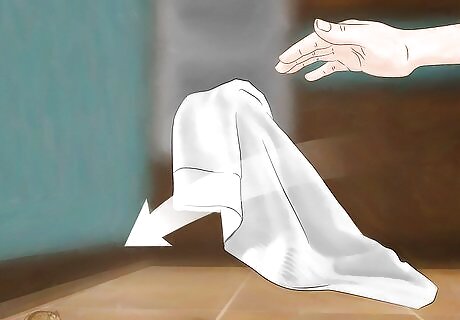
Throw a towel over the mouse. It will stay under the towel for only a short time, so you need to act quickly. Put an inverted waste-paper basket over the towel. Tuck the exposed bits of towel under the basket so it is in contact with the ground. Slide an LP record or large piece of cardboard under the basket and towel. Carefully turn the basket over the right way, with the cardboard tight against the lip of the basket. Take the whole thing outside and walk (or run!) the basket, mouse, and towel as far from your home as possible. Once you're far from your home, release the mouse.




















Comments
0 comment